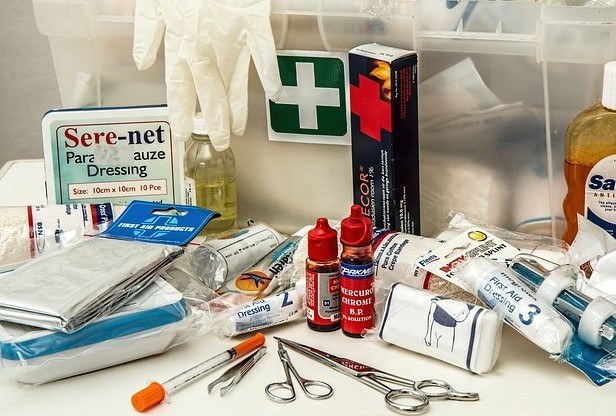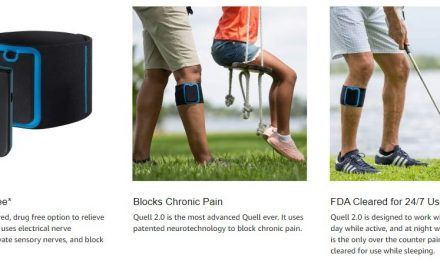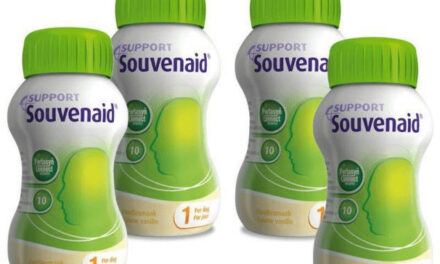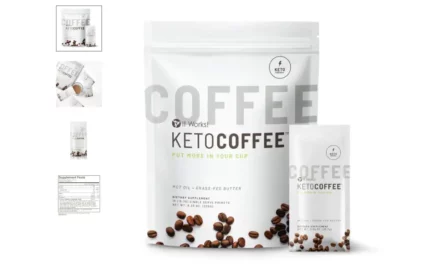Most of the wounds should be covered in order to protect them from infection-causing bacteria and dirt. Wound dressings are materials used to cover a wound site; this can be in the form of bandages, adhesives, and other devices. In general, wound dressing products are designed to keep wounds closed, protected, moist and secure. In this article, we delve into the intricacies of the 25 best wound dressing products, offering expert insights to help you make informed choices for your specific needs.
Wound dressings vary in size, shape, materials and could be adhesive or non-adhesive. They are designed to meet the needs of wounds ranging from minor to severe wounds and injuries, and for wounds covering small areas to very large areas of the body.
The Role of Wound Dressings in Healing
Wound dressings play a pivotal role in protecting wounds from infection-causing agents while promoting optimal healing conditions. These dressings come in various forms, including bandages, adhesives, and specialized devices. Regardless of the wound’s severity, size, or location, choosing the appropriate dressing is crucial.
Selecting the right wound dressing requires a comprehensive evaluation of several factors. Our Experience has shown that inadequately protected wounds can lead to chronic and persistent conditions. Thus, it’s essential to understand the following aspects before making your choice:
Things to Consider When Selecting a Wound Dressing
Research has shown that when a wound is not adequately protected and becomes infected, it makes the wound more likely to become chronic and long-lasting. So, it important to choose the best dressings to support fast wound healing.
Before choosing a dressing, you have to consider the following:
- The severity of the wound; is it an abrasion, deep wound, laceration, puncture, diabetics ulcer or pressure ulcer?
Tip: Roho Cushions Can be an Excellent Choice in Preventing Pressure Ulcers, especially if you want to Choose a Cushion for a Wheelchair.
- Is it dry or draining?
- The medical conditions of the patient; is the patient suffering from poor circulation or any vascular diseases which means tightening the wound will be an issue or if the patient is allergic to any of the materials used for the dressings. Any history of diabetes or if the wound is likely to associate with diabetes.
Tip: Here are the Early Signs Of Diabetes In Men and Symptoms Of Diabetes In Women.
- The type of injury; is it a burn, accident or as a result of surgery?
In general, a good wound dressing should be able to absorb any moisture seeping from the wound, should not stick to the wound, and should protect the wound completely from anything that could infect the wound during the healing process.
Tip: We covered the Types of Wounds and Wound Healing Process In the article Wound Care and Treatment.
Wound Dressings Types
There are two main types of wound dressings; dry dressings and moist dressings.
Dry Wound Dressings
When it comes to wound dressings, the first thing that pops up in our mind is gauze pads that lie under rolled gauze, tape, cotton wool and our standard bandages which are dry dressings and are simpler for most people to take care of and change. They are mostly used for relatively dry wounds.
However, using gauze and bandages has become a part of history in most of the western world. They consider it as ‘old-school’.
And for wounds like burns or wounds with drainage, some just clean them with a cotton ball and antiseptics and let them to air dry because they believe it will help the wound to heal faster which of course is not true.
Wet Wound Dressings
Medical research has proven that moist wound dressings, which create a moist condition for the wound is superior to dry wound dressings or leaving wounds open to get them dry. This is due to the importance of creating moist wound conditions to accelerate the healing process and also to help to reduce the risk of scarring and scabs.
The moist environment at the wound site allows skin-forming cells to spread horizontally outwards through the thin layer of wound exudate to close the wound effectively. It will repair the skin faster and make it flawless.
Moist Wound Dressings vs Dry Wound Dressings
Moist wound dressings are superior to dry wound dressings in the following ways:
| Moist Wound Dressings | Benefits |
|---|---|
| Hydrocolloid Dressings | Create a moist environment, protect against infection, and aid healing. |
| Hydrogel Dressings | Improve patient comfort, reduce pain, and assist in infection management. |
| Alginate Dressings | Absorb excess fluid, promote faster healing, and aid in wound debridement. |
| Collagen Dressings | Enhance wound healing by encouraging tissue regeneration and closure. |
| Foam Dressings | Allow moisture while preventing bacterial infection, suitable for various wounds. |
| Transparent Dressings | Maintain wound dryness, offer visibility for monitoring, and prevent infection. |
| Cloth Dressings | Protect minor injuries like grazes and cuts, available in various shapes and sizes. |
| Medical Grade Honey | Natural antibacterial agent, supports healing, and aids in debridement. |
| Antimicrobial Dressings | Alter wound bed bio burden, minimize infection risk, available in various forms. |
It speeds up the wound healing
The wound needs a moist environment to form new skin cells and tissue. Cells need moist condition to grow and multiply.
Moist wound dressing helps to create and maintain a moist environment for your skin to heal faster and properly.
Tip: This guide explains How To Speed Up Wound Healing.
Moist wound dressings prevent scabbing
Under dry conditions, it will be difficult for new skin tissue to form rather scabs are mostly formed on wounds that are left to dry in the air, and this makes it hard for a wound to close and heal properly.
The formation of scabs on a wound is not a sign of healthy healing; it prevents skin from healing and becoming flawless.
Moist wound dressings are made to be skin-friendly
Wet wound dressings are made with skin-friendly materials, without fragrances, colorants, and preservatives and some adhesive or non-adhesive, ultra-thin, flexible and breathable, with many options for those with sensitive skin.
The Best Wound Dressings to Heal Wounds Faster
The most commonly used wound dressings are below.
1. Hydrocolloid dressings
They are non-breathable dressings that are self-adhesive and require no taping. They are flexible and comfortable to wear and suitable for most skin types.
Hydrocolloid dressings work by creating a moist environment, which helps the wound to heal.
The surface of the dressing is coated with a substance containing polysaccharides and other polymers, which absorb water and form a gel, to keep the wound clean, to protect it from infection, and to help it to heal faster. They are impermeable to bacteria, are long-lasting, easy to use and biodegradable
2. Hydrogel dressings
Hydrogel dressings are designed to make the patient comfortable, to reduce pain while the wound is healing, and to fight infection.
Tip: Leg pain could be due to diabetes too. Explore tips on Diabetes Leg Pain Relief here.
3. Alginate dressings
Alginate dressings can absorb excess fluid and create a gel that helps to heal the wound or burn faster.
They contain sodium and seaweed fibres. They are biodegradable after use.
They are made for wounds that have high amounts of drainage.
They need to be changed every two days, or more, depending on the amount of wound liquid they absorbed, and the nature of the wound.
4. Collagen dressings
Collagen dressings speed up the wound healing process by helping to remove dead tissue, by encouraging the formation of new blood vessels, and by helping to harmonize the wound edges together.
5. Foam dressings
Foam dressings are designed to allow water vapor to enter the wound to keep the wound moist to promote faster healing while preventing bacterial infection.
They are suitable for absorbing exudates from the wound’s surface.
Foam dressings are suitable for wounds of varying degrees of severity and injuries that exhibit odors.
6. Transparent dressings
Transparent dressings are breathable, but impermeable to bacteria, keeps the wound dry and clean and prevent infection.
Just as the name, they are transparent as clear film and are mostly used by medical practitioners to monitor wound healing, making it easier for them to identify any possible complications such as infection of a wound without removing the dressing.
They are comfortable to wear.
Tip: it is important to use a comfortable dressing if you plan to travel with a wound. Here are our Tips for Air, Sea and On-Road Travel with Diabetes.
7. Cloth dressings
Cloth dressings are amongst the top commonly used dressings, often used to protect open wounds or cuts.
They are good for minor injuries such as grazes or cuts. The dressings come in many shapes and sizes.
8. Medical-grade honey
Honey is a well-known natural antibacterial agent. It also debrides wounds naturally, meaning it helps remove dead tissue that, if allowed to remain, encourages the growth of infection-causing bacteria.
9. Antimicrobial dressings
They are wound covers that alter the wound bed bio burden.
They help to minimize the risk of infection in wounds; they are available as sponges, impregnated woven gauze, film dressings, ointments or a combination of materials.
The ability to handle exudate depends on the characteristics and composition of the product.
Silver is one of the compositions used and has been used for a long as a natural antibacterial treatment of wounds.
Tip: Negative Pressure Wound Therapy can help to heal Pressure Ulcers, Venous Ulcers and Diabetic Ulcers.
Let’s review some of the most popular wound dressing products.
PROMOGRAN Prisma Matrix Dressing Review
PROMOGRAN® Prisma® Matrix Dressings is an antimicrobial dressing, which comprises of 44% oxidized regenerated cellulose (ORC), 1% silver-ORC in a sterile, freeze-dried composite and 55% collagen.

PROMOGRAN Prisma Matrix dressing helps to maintain a physiologically moist microenvironment at the wound surface, which is conducive for the formation of granulation tissue, epithelization and optimal wound healing. The dressing contains ionically bound silver an antimicrobial agent which provides antimicrobial protection against bacteria and infection. It is used for the management of exuding wounds.
| Features | Pros | Cons |
|---|---|---|
| 44% oxidized regenerated cellulose (ORC) | Suitable for under compression bandaging | May contain chemicals that raise health concerns. |
| 1% silver-ORC | Supported by clinical evidence | Contraindicated in hypersensitive patients. |
| 55% collagen | Applicable to various body areas | Relatively expensive. |
| Hemostatic properties | Can be molded to fit or cut as needed | |
| Ionic silver antimicrobial agent | Used for management of exuding wounds |
Features
- PROMOGRAN Prisma Matrix contains 44% oxidized regenerated cellulose (ORC), 1% Silver-ORC and 55% collagen.
- Shape: hexagon
- It is sterile and has hemostatic properties.
- It can be moulded to fit the wound or cut with sterile scissors to fit over the wound.
- It features a silver property that hinders microbial activity and promotes wound healing.
Pros
- PROMOGRAN Prisma Matrix is suitable for under-compression bandaging.
- Its efficacy has been supported and proven by a body of clinical evidence. This includes published randomized controlled trials.
- It is ideal for any part of the body.
- Depending on the nature of the wound, it can be worn for up to 7 days.
- Fast and easy to use.
Cons
- PROMOGRAN Prisma Matrix may contain chemicals that could cause cancer or even birth defects.
- It is contraindicated in patients that have a known hypersensitivity to collagen, ORC and silver.
- It is expensive.
Activon Manuka Honey Dressing Review
Activon® Manuka Honey® Dressings contain medical-grade honey and are used for acute and chronic wounds.
Activon Manuka Honey dressings help to prepare the wound bed and promote an ideal healing environment.
It helps in reducing edema and debriding slough.
Activon Manuka Honey is used for partial-thickness and full-thickness wounds, which include leg ulcers (arterial, venous and diabetic ulcers), pressure ulcers, burns, donor sites and surgical wounds.
Tip: Detailed guide on How To Prevent and Care for Diabetes Wounds in the article Diabetic Wound Care And Treatment.
Activon Manuka Honey comes in two forms:
1. Activon Manuka Honey Tube
The tube contains 100% medical-grade Manuka honey without preservatives. It can be used in wound cavities, as a topical treatment, and also as a wound filler for debriding necrotic tissue or in together with other products.

The product helps to maintain a moist wound healing environment, facilitating faster healing of chronic troublesome wounds.
2. Activon Manuka Honey Tulle
Activon Manuka Honey® Tulle is a knitted viscose mesh dressing infused with 100% Manuka honey.

This dressing creates a moist healing environment and helps to effectively eliminate wound odour.
Activon Tulle is used for granulating or shallow wounds malodorous wounds, dry wounds, leg ulcers, diabetic ulcers, pressure sores and infected wounds. It is a good choice when debriding or de-sloughing small areas of the died skin tissue (necrotic) or sloughy wound.
| Dressing Type | Pros | Cons |
|---|---|---|
| Activon Manuka Honey Tube | Safe for diabetic patients | Not suitable for those allergic to bee venom |
| Activon Manuka Honey Tulle | Reduces wound odor | May cause initial discomfort |
| Medical-grade honey | Supports autolytic debridement and wound healing Offers natural antibacterial properties | May not adhere well after initial removal |
Pros
- They do not absorb into the bloodstream, meaning it can be safely used in diabetic patients.
- It is easy to use and can be cut to varying sizes.
- It works great for scabby irritations and is natural.
- It reduces wound odors and promotes fast wound healing.
- It does not give a stinging sensation.
Cons
- It should not be used on patients with allergies to venom, such as that of a bee.
- You may feel some discomfort on first application and may need to take an analgesic.
- It does not come with threads. Once the top is taken off, it can’t be placed back.
3M Tegaderm Dressings Review
Tegaderm™ Transparent Film Dressings manufactured by 3M.
Tegaderm dressings provide a waterproof barrier to external contaminants, yet they still allow oxygen to penetrate and maintain a moist environment for better wound healing and skin health and to secure devices to the skin.
3M’s Tegaderm can be used to cover surgical wounds, minor burns and injuries, intravenous (IV) sites, catheter site and central lines.
It is flexible and comfortable to wear.
Tegaderm is made with a hypoallergenic, latex-free adhesive that is gentle to the skin, but strong enough to hold catheters and other devices in place.
Tegaderm is available in many sizes and can also be cut for a customized fit.
3M Tegaderm Dressings Range is below:
Tegaderm Foam Dressing

Primary dressing for low, moderate and highly exuding partial and full-thickness skin (dermal) wounds.
It can be used under compression bandage systems for venous treatment.
Tegaderm Adhesive Dressing

A high-performance adhesive dressing range for low, moderate and highly exuding wounds.
Tegaderm Hydrocolloid Dressing

The Hydrocolloid Dressing maintains an optimal moist condition that enhances wound healing.
An advanced hydrocolloid dressing for moderately draining wounds is recommended. It can be worn for up to 7 days.
Tegaderm Hydrocolloid Thin Dressing

An advanced hydrocolloid thin dressing is recommended for low to moderately-draining wounds.
Tegaderm Alginate Dressing

Alginate is a 100% calcium alginate fibre dressing for moderate to heavily exuding wounds. The product is available with and without Silver (Ag)
Tegaderm I.V. Dressing

This is a dedicated, transparent Intravenous cannula (I.V.) dressing.
It is used as a dressing for Central Venous Catheters (CVC), Peripherally inserted central venous catheters (PICC) and Midline, PVC care in adults and children.
Tegaderm Film

It is a transparent film dressing with a viral and bacterial barrier.
Tegaderm Contact Dressing

A non-adherent dressing to protect the wound bed and reduce pain during healing suitable for use underneath compression systems in the treatment of leg ulcer.
Let’s look into Tegaderm’s strengths and weaknesses.
Pros of 3M Tegaderm Dressings
- They form a tremendous waterproof post-surgery incision cover and can hold up even through showers and sweats.
- The dressings last for long on the skin and keep the skin underneath protected.
- It is quite affordable.
Cons of 3M Tegaderm Dressings
- Sometimes fluids build up under the bandage, and managing it can be a difficult task.
- It is not ideal for people with thin or sensitive skin because it can easily irritate their skin after removal (pain and red rashes) and could even cause open sores. Elderly and people with delicate skin, therefore, should reconsider using Tegaderms.
Tip: Did you know possible causes of Leg Pain at Night?, Back of the Leg Pain?, Foot Pain?, Upper Leg Pain?, Groin Pain?, Calf Pain?, Knee Joint Pain?, Upper Back Pain?, and Lower Back Pain?
Convatec DuoDERM Dressings Review
Convatec® DuoDERM™ Dressings are the first to incorporate hydrocolloid technology.
They are designed to bring gentleness to wound management and to make life easier. They are designed with an outer film, which serves as a waterproof barrier over the dressing and foam layer to provide both thermal and mechanical protection.
The honeycomb matrix of hydrocolloid particles absorbs the drainage from the wound to form a soft, moist gel to create an optimal moist wound healing environment.
Convatec DuoDERM The dressings keep nerve endings moist, which helps to provide relief from discomfort. They are used for light to moderately exuding wounds.
Some popular Convatec DuoDERM Dressings Brands are noted below.
DuoDERM Signal Dressing

The Signal™ is designed with a visual change indicator, which indicates when a dressing needs to be changed, which makes it easier to decide when to change the dressing.
DuoDERM Signal comes in different shapes designed to be used in the difficult-to-dress areas and areas subject to frictional force, including the heels, buttocks, sacrum, elbows, and trochanters.
DuoDERM Extra Thin Dressing

The Extra Thin Dressing is thin, flexible and versatile.
It is designed to minimize the risk of further skin breakdown due to friction.
It can be used as a primary hydrocolloid dressing for dry to lightly exuding wounds, skin tears and, superficial wounds, skin at risk of further breakdown.
DuoDERM CGF Dressing

The CGF™ dressing is an adherent dressing indicated for the management of exuding wounds.
It promotes granulation and facilitates autolytic debridement. Autolytic debridement removes necrotic tissue as quickly as enzymatic debridement.
DuoDERM Hydroactive Gel

The Hydro Active® gel facilitates autolytic debridement by hydrating dry, necrotic, sloughy or granulating wounds and creating a moist environment that promotes autolytic debridement in dry wounds.
| Dressing Type | Pros | Cons |
|---|---|---|
| DuoDERM Signal Dressing | Visual change indicator for timely dressing changes | Handling fluids buildup can be challenging |
| DuoDERM Extra Thin Dressing | Minimizes skin breakdown risk due to friction | Requires careful removal for thin skin |
| DuoDERM CGF Dressing | Promotes granulation and autolytic debridement | May cause discomfort during removal |
Pros of Convatec DuoDERM Dressings
- They are easy to use and suitable for the different stages of wound healing.
- The dressings are highly conformable – and can be easily and gently moulded into place.
- Lessor or absence of pain during peeling.
- They hang on for about 1-2 days and can be worn in the shower.
- They are transparent, more like the colour of the skin; hence, it is inconspicuous.
Cons of Convatec DuoDERM Dressings
- You have to be very careful while peeling, especially if you have a thin skin, else it could take more than just the dead skin cells.
- It could be a bit discomforting to wear in the heat.
- The edges are not well tapered, and the adhesive does not last much longer when compared to other dressings like the Promogran Prisma Matrix.
Silvercel Dressing Review
Silvercel™ Dressings are antimicrobial alginate. They are sterile, non-woven pad composed of a high G (guluronic acid) alginate, carboxymethylcellulose (CMC) and silver-coated nylon fibres.

Silvercel Dressing provides a constant slow release of silver ions within the dressing for over 7 days, which is an effective barrier to bacterial penetration and provides antimicrobial protection.
The dressing’s unique composition manages exudates well in exuding wounds (moderate-to-heavily exudating) to reduce the risk of maceration and promote a favorable moist wound environment.
| Dressing Type | Pros | Cons |
|---|---|---|
| Silvercel Dressings | Slow-release silver ions offer antimicrobial protection | Relatively expensive |
| High absorbency and wet tensile strength | Manages exudates and reduces risk of maceration | May not target specific pathogens |
Pros of Silvercel Dressings
- The dressing’s stretchability increases when in contact with wound exudate, which allows for intact removal and reduces the risk of leakage.
- It has high absorbency and high wet tensile strength.
- It is designed not to break up in the wound and to manage exudates well.
Cons of Silvercel Dressings
- It is quite expensive.
- It does not have a powerful anti-microbial property and therefore is not ideal for killing certain pathogens like E. coli and MRSA.
Conclusion
When it comes to wound healing, it is important to ensure that healing is as fast and effective as possible to prevent acute wounds progressing into chronic ones.
Receiving early intervention and proper specialized wound care is very important, you don’t have to live with chronic wounds and for this reason, using the right dressing is inevitable.
The type of wound dressing should use for a wound always depend on various factors, including the type of injury (cause of the wound or ulcer), the size, location, and severity.
Here, in the article, we reviewed some of the best wound dressing products. There are those that last longer, the antimicrobial ones, the more affordable ones etc. However, each one comes with some limitations. You should check for the pros and cons to help you decide on which to go for your specific wound needs.
Tip: Infrared Heating Mats promote wound recovery by stimulating the cells to produce collagen.






Your article is a goldmine of wound dressing knowledge! It’s really insightful how you’ve covered the various types of dressings and their advantages. I’ve been curious, though – with the vast selection out there, how can someone confidently pick the perfect dressing for a wound that’s both draining and at risk of infection? It seems like a critical decision. Thanks for sharing this incredibly helpful information; it’s a game-changer for anyone dealing with wound care!
Dear Stratos,
Thank you for your kind and enthusiastic words about the article on choosing the right wound dressing for optimal healing! I’m truly thrilled to hear that you found the information insightful and valuable in the realm of wound care.
You’ve raised a crucial question regarding the selection of the perfect dressing for wounds that are both draining and at risk of infection. Indeed, this can be a critical decision that significantly influences the healing process. When dealing with such wounds, it’s important to strike a balance between managing moisture, preventing infection, and promoting healing.
For wounds that are draining, absorptive dressings can be highly effective. These dressings are designed to wick away excess moisture, which helps in maintaining an environment conducive to healing. When infection risk is a concern, antimicrobial dressings that contain agents like silver or iodine can provide an added layer of protection against pathogens.
A great approach is to consult a healthcare professional who can assess the wound’s specific characteristics and recommend the most suitable dressing. They can consider factors such as wound size, depth, location, drainage level, and risk of infection. Remember, wound healing is a dynamic process, and the choice of dressing might need to be adjusted as the wound progresses.
While the vast array of dressing options might seem overwhelming, having a clear understanding of the wound’s needs is the first step towards confident decision-making. We’re truly pleased that you’ve found the information in the article to be a game-changer in the world of wound care. If you or someone you know is navigating wound care challenges, please don’t hesitate to seek professional guidance.
Empowering yourself with knowledge and seeking expert advice are key components of ensuring the best possible outcomes. Feel free to reach out if you have any more questions or need further insights.
Wishing you and your loved ones the very best on your journey towards optimal wound healing!